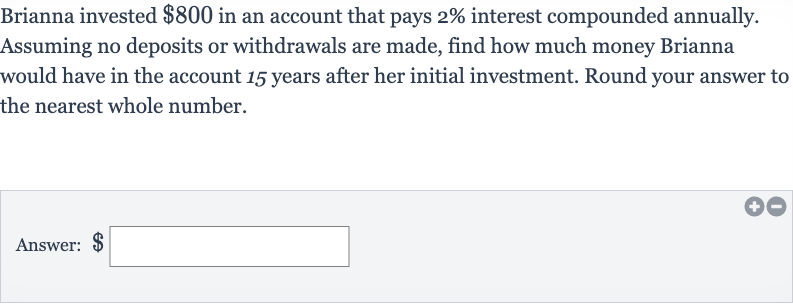AI tutor
Welcome to Bytelearn!
Let’s check out your problem:

Brianna invested in an account that pays interest compounded annually. Assuming no deposits or withdrawals are made, find how much money Brianna would have in the account years after her initial investment. Round your answer to the nearest whole number.Answer:
Full solution
Q. Brianna invested in an account that pays interest compounded annually. Assuming no deposits or withdrawals are made, find how much money Brianna would have in the account years after her initial investment. Round your answer to the nearest whole number.Answer:
- Given Information: We have:Initial investment (Principal, ): Annual interest rate (): or in decimalNumber of years (): Interest is compounded annually (): time per yearWe will use the compound interest formula: Where is the amount of money accumulated after years, including interest.Let's calculate the amount .
- Convert to Decimal: First, convert the interest rate from a percentage to a decimal by dividing by . Interest rate in decimal =
- Plug into Formula: Now, plug the values into the compound interest formula.
- Simplify Expression: Simplify the expression inside the parentheses.
- Add Numbers: Add the numbers inside the parentheses.
- Calculate Value: Now, calculate the value of . Using a calculator,
- Multiply Principal: Multiply the principal amount by the calculated value. (rounded to four decimal places for simplicity)
- Perform Multiplication: Now, perform the multiplication to find the total amount.
- Round Answer: Round the answer to the nearest whole number as instructed.
More problems from Compound interest
QuestionGet tutor help
QuestionGet tutor help
QuestionGet tutor help
QuestionGet tutor help
QuestionGet tutor help
